After the first part of my travel guide to Estonia focusing on Tallinn and Tartu and its surroundings, I’m now concentrating on Pärnu, Saaremaa and Haapsalu. I received a lot of positive feedback for the first part and hope that I can make you even more curious about this fabulous Baltic country. I will again combine both my experiences from 2011 and 2016.
Pärnu
I’ve visited Pärnu at the southwestern Estonian Baltic coast twice: Once in 2011 during the folly of the summer months and now in May 2016 in a much more relaxed atmosphere before the main season. Every year at the beginning of summer, Pärnu is officially pronounced „Summer capital of Estonia“ by the mayor of Tallinn and it is no surprise that this small city (only 42.500 inhabitants) is buzzing with tourists during the summer months.
Pärnu is very well-known for its mud baths, its beach and the city has some nice Art Nouveau houses as well as a lot of traditional wooden houses to discover. It is a great place if you just want to hang out at the beach and relax. As in most parts of Estonia, the Baltic Sea is shallow there and you need to walk at least 100 metres into the water to be able to swim. That’s why the water is quite warm in summer, about 20-22°C. I used to spend my childhood summers at the German Baltic coast where the water is usually quite cold. So it was a nice surprise to me that the Estonian coast, as well as the Latvian one, is very well suited for a swimming vacation. And this in addition to all the forest lakes, just wonderful!
From Pärnu, you can also take a ferry to one of the Estonian islands, e.g. Kihnu which is very well know for its (quite) preserved traditional Estonian lifestyle. I haven’t visited Kihnu yet but will do so during this years’ summer solstice and very much looking forward to it.
This time, I explicitely returned to Pärnu to visit the Soomaa National Park which is about 40 kms in the East of Pärnu and accessible by bus or guided day-trips if you don’t have a car. I had read a lot about the park and wanted to take the opportunity to visit. Soomaa is a very special place, a wetland territory formed during the Ice Age. Soomaa has a diverse flora and fauna including deer, elks, beavers and even wolves and brown bears. Unfortunately, all the animals were hiding during my visit. The park also has a so called fifth season as it gets flooded every year in spring. During that period, you can still discover Soomaa by canoe.
I joined a day-trip to discover Soomaa and we walked only a tiny part of the 390 km² big park but it was a great experience. Our guide Edu knew everything about Soomaa and at the end, we even did a short kayaking tour down one of the rivers. A truly amazing experience and highly recommendable if you want to learn more about the diversity of the Estonian country side and nature in general!
Saaremaa
From Pärnu, you can easily take a bus to Saaremaa, the largest Estonian island with 2,673 km2 and one of my favourite places.
During Soviet times, Saaremaa was a restricted military zone and only people with special permission were allowed to enter and live on the island. This was actually a blessing for nature as it preserved a lot of genuine parts of Saaremaa. The biggest city on Saaremaa is Kuressaare which can even be reached by plane from Tallinn. Kuressaare’s famous landmark is the Kuressaare Episcopal Castle which was built in the 14th century. There are several festivals held in summer on Saaremaa and nowadays, it is also well known for the production of organic food and goods.
A nice way to explore Saaremaa is by bike. In 2011, I did two bike trips around the southern part of the island and took the opportunity to not only see more of Saaremaa but also to go for a swim at every turn of the road. You’ll find a lot of lovely and often completely empty beaches on the island.
Haapsalu
From Saaremaa, I tried to get to Haapsalu by bus directly but I gave up after several hours waiting and made the detour via Tallinn. The bus system in Estonia is very much centrally focused on Tallinn but as you can cross the country in about 4 hours, it’s not really a problem.
Haapsalu has a vivid past as a very well know seaside resort where e.g. the Russian royality liked to spend their summers. The city has a very nice promenade with several sights, including a historic concert hall and an ice bear statue in the harbour. In the ruins of the castle, the ghost of the white lady is said to wander around, searching to put her soul to rest. Haapsalu also has a now defunct train station with the longest, architecturally very interesting platform in Estonia.
For me, one of the highlights of Haapsalu was the beautifully curated Ilon Wikland museum. Ilon Wikland illustrated most of Astrid Lindgren’s stories, amongst them The Six Bullerby Children and Karlsson-on-the-Roof. As part of the Swedish minority in Estonia, Wikland escaped to Sweden in 1944 before the Soviet occupation but the city is very proud of her famous child.
Haapsalu and the region with the islands used to be the center for the so called Estonian Swedes from the 13th century onwards until almost all of them fled from the Russian occupation in 1944. Nowadays, several initiatives try to maintain the memory of the Estonian Swedes in the region like the Museum of the Coastal Swedes in Haapsalu.
From Haapsalu, you can easily access the islands of Vormsi and Hiiumaa which are famous summer getaways for Estonians and tourists as well.
What comes next
Even as Estonia is small in comparison to other European countries, I haven’t seen so many of the other interesting places yet. Amongst them are: the island of Muhu, Hiumaa and Kihnu as well as Lake Peipus. I’m looking forward to spend a couple of more weeks in this wonderful country during this summer!
I hope I could inspire you to maybe plan your next trip to Estonia. It’s absolutely worth it! Also, find my the first part of my travel guide to Estonia on Tallinn and Tartu here and the third part of my travel guide on some of the Estonian islands here.
I’d love to hear from you in the comments if you’ve been to Estonia and where. I’m also glad to share my accommodation recommendations on request.
© All photo rights belong to Kathleen Fritzsche.





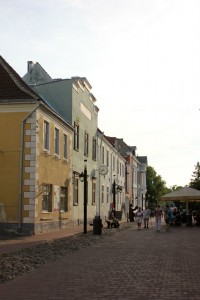
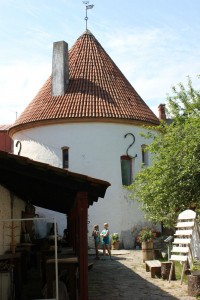


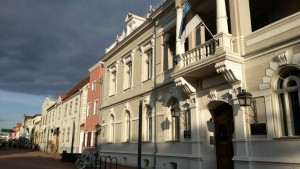







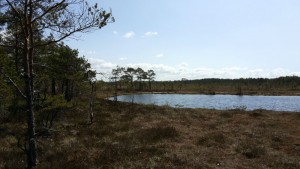
























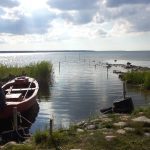
Excellent posts! Danke, danke, danke!
Thank you Ericka! I’m glad you liked the posts!
I totally agree. You still have plenty to explore. Muhu and Peipsi are equally soothing places to enjoy, and that all uis best done by bicyckles. Distances are not too great. „Go for it“.
Somebody from Finland.
Thank you, Atte! Great point. I rented a bike on Kihnu during the past two days and it was wonderful 🙂
Very nice! I also recommend that if you can you do the trip to Võrumaa and Põlvamaa. Here you can see more Estonian culture and one ethnic part of it called Setumaa and their people. They speak different than most of Estonians.
Thank you Piret for the tip! I’ll definitely check out those places. Have a great Victory Day today! 🙂
Hi Kathleen, I like your guide! One question, I’m thinking about staying at Haapsalu (Maybe at the Hotel Fra Mare Spa) and was curious, would I be able to do day trips to Saaremaa from Haapsalu? Maybe stay 4 days in Haapsalu and spend 2 days just to go to Saaremaa? Would you recommend this or discourage it? Thanks!
Hi Charles,
So sorry, somehow missed your comment and question. Yes, you can do daytrips from Haapsalu to Saaremaa but I highly recommend to stay in Saaremaa for a couple of days. There’s so much to discover! Haapsalu is cool for a day or even only half a day. The islands are in my opinion worthier to visit longer.
Hey ! Places you have mentioned looks quite interesting. Just need to ask you one thing ..I’m travelling in last week of August and spending 5 nights in Estonia ..so apart from tallinn and have two places to decide from either parnu or saaremaa or may be could stay at kuresaaree and visit saaremaa or muhu ? We’re two cousin’s ..in our latest 20’s what would you suggest ?? And one more question ..lahemma or soomaa which national park is better ??
Thanks !
Hey Sahil,
Great to hear! It depends on what you’re looking for to do in Estonia. Pärnu is the summer capital of Estonia, with lots of things and parties going on. Saaremaa is much more relaxed but can get a bit busy during summer as well. Kuressaare is a nice little town and a good starting place to explore the island by bike. I haven’t been to Muhu yet but have heard many good things about it. For Lahemaa vs. Soomaa, they’re very different. Lahemaa can be visited on a day tour from Tallinn and has the typical Baltic/Scandinavian coastal atmosphere and nature. Soomaa is a bit more difficult to visit, especially if you don’t have a car, but is a wonderful moorlands area with lots of things to discover. Mosquitos might be a problem in summer though…
I hope this helps. I wish you a fantastic time in wonderful Estonia!
Kathleen
Wow, I just stumbled upon your blog and recognised a few places from the photos that I would have never ever guessed a tourist stumbles upon! There is a photo of the windmill ruins in Ilpla (https://et.wikipedia.org/wiki/Ilpla) and of the church in Püha (https://et.wikipedia.org/wiki/P%C3%BCha_kirik). Even locals don’t know where Ilpla is, so really interesting that you went over there!
Thank you, Jane! Yes indeed, I love roaming around the Estonian countryside, going off the beaten track and discovering smaller places. It helps that I love biking 🙂 I’m longing to go back to Estonia and discovering more places, it has been too long, again.